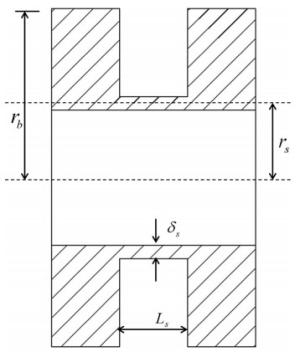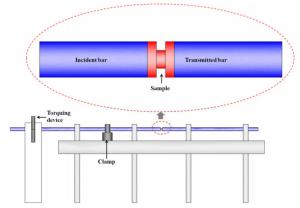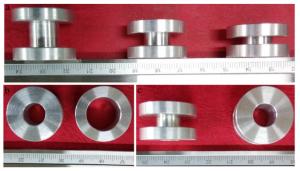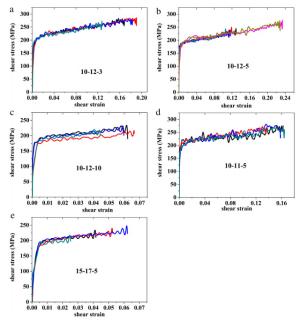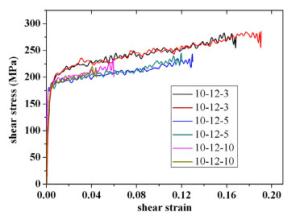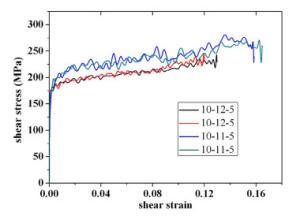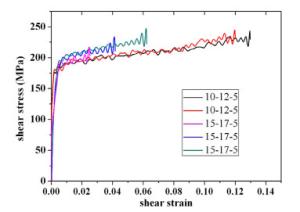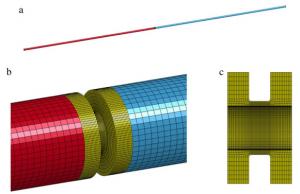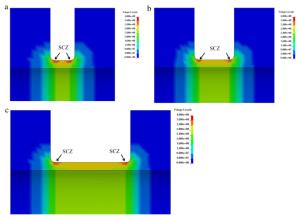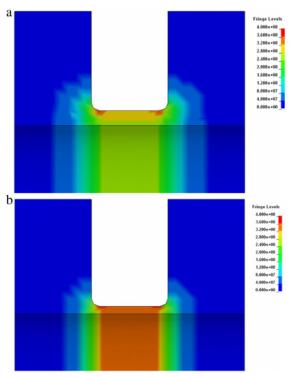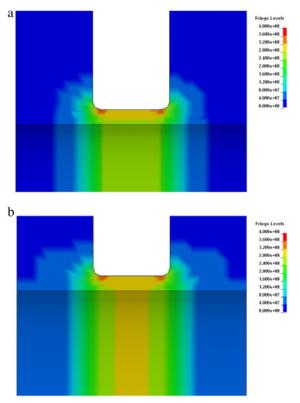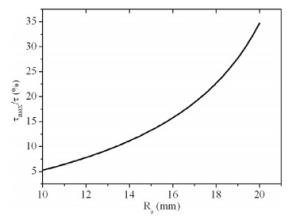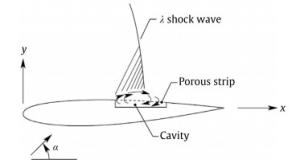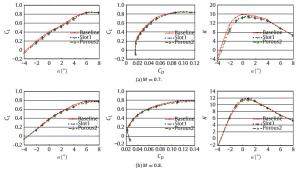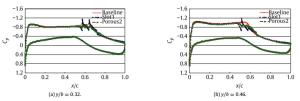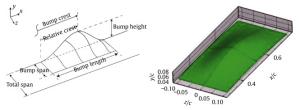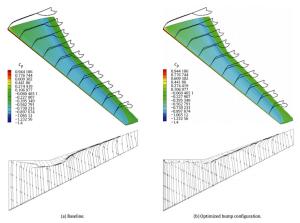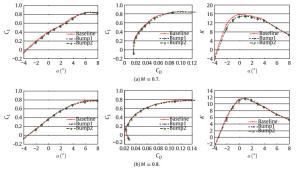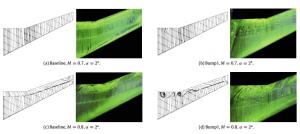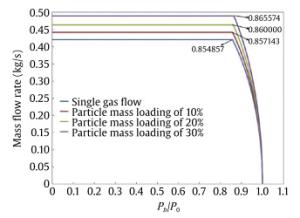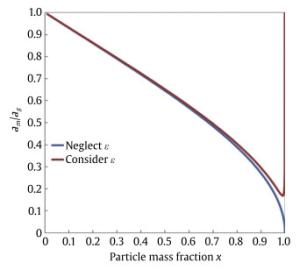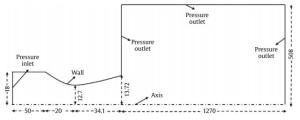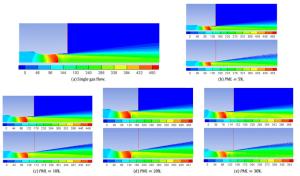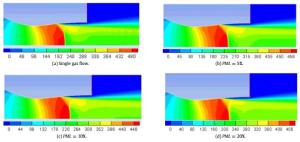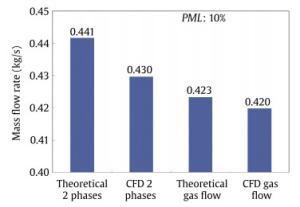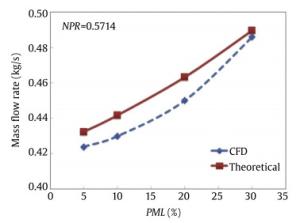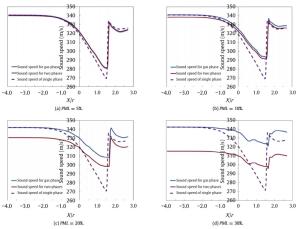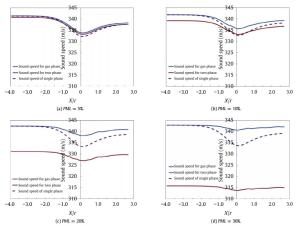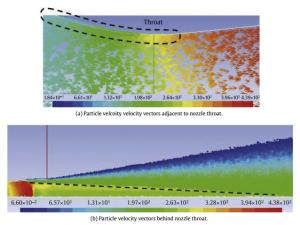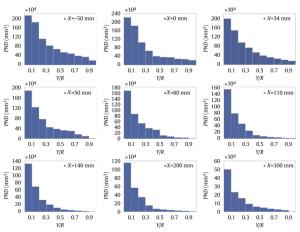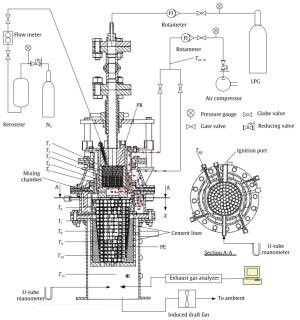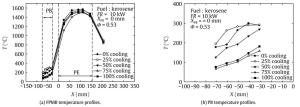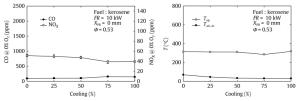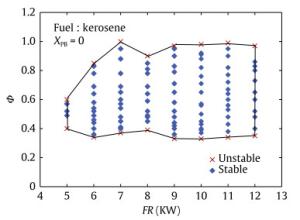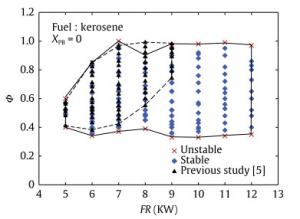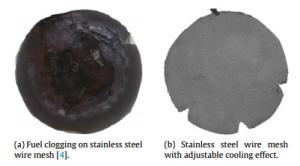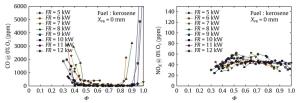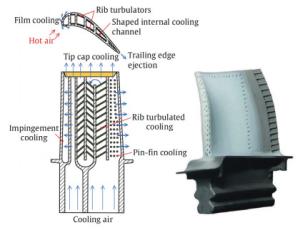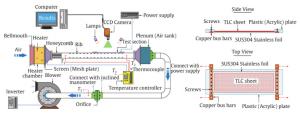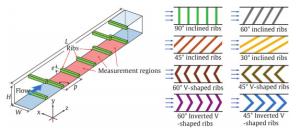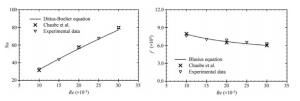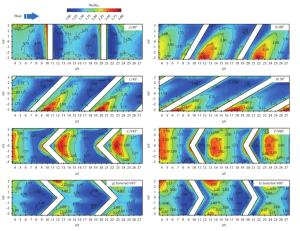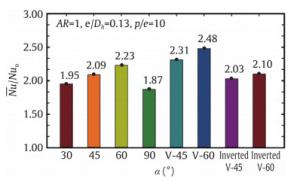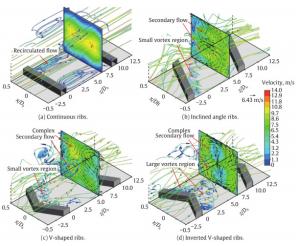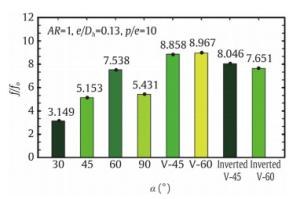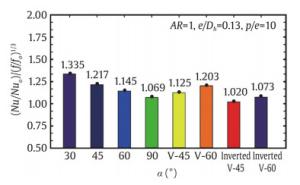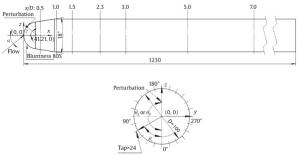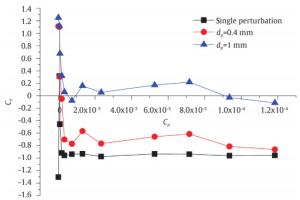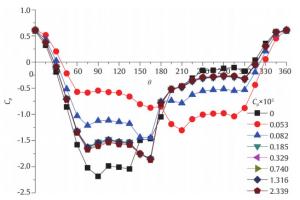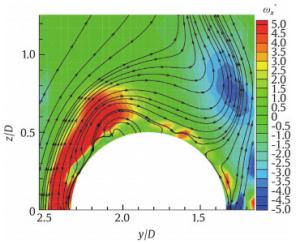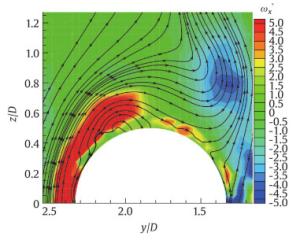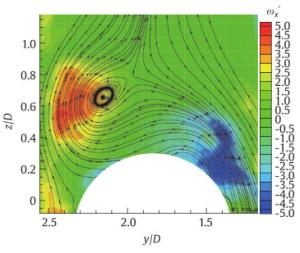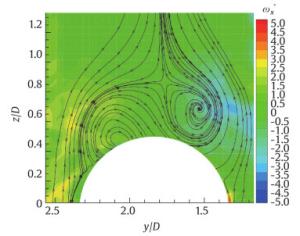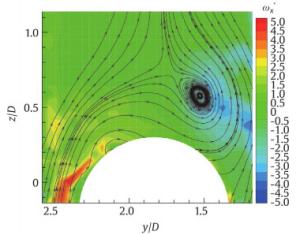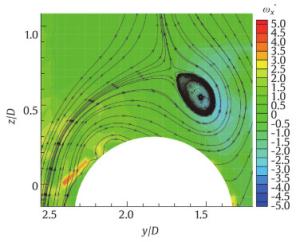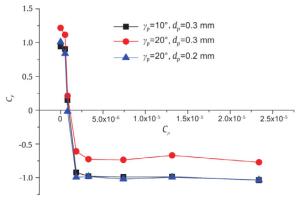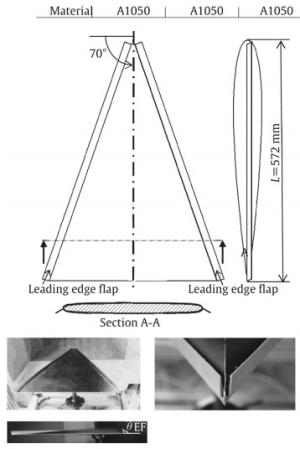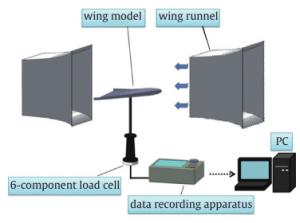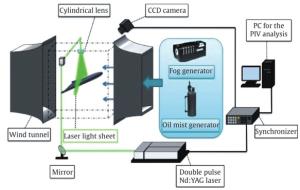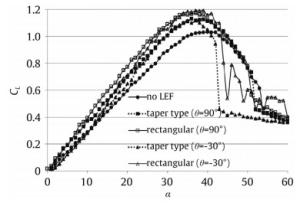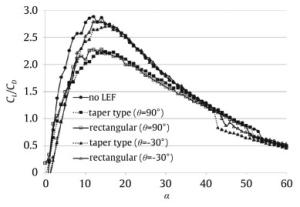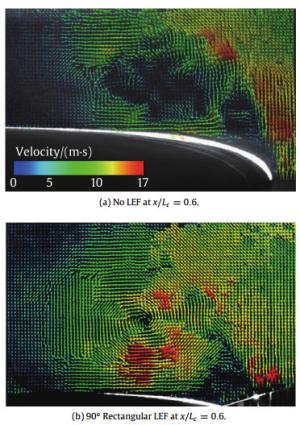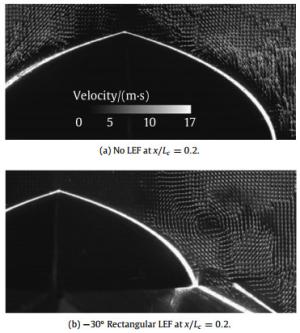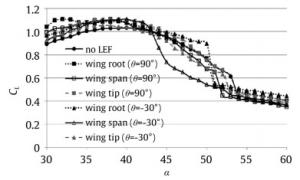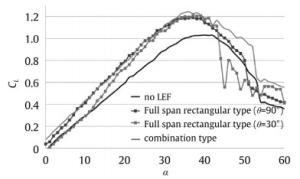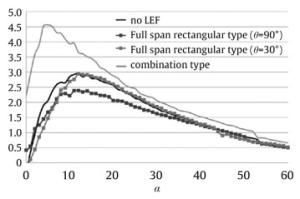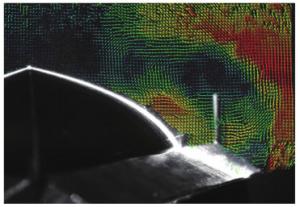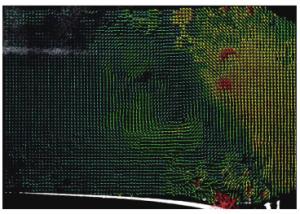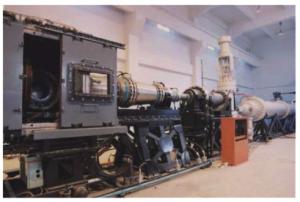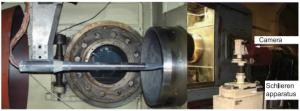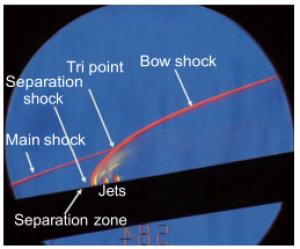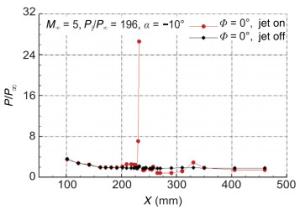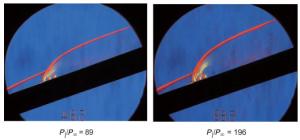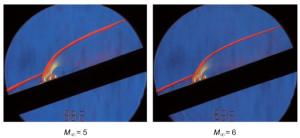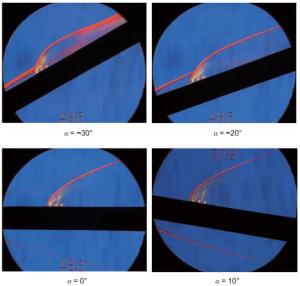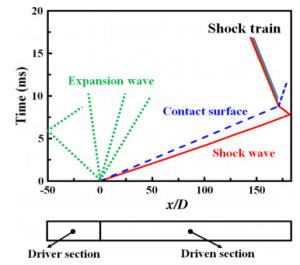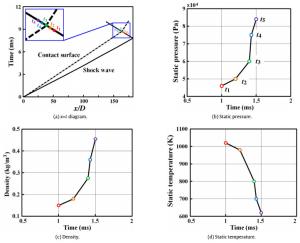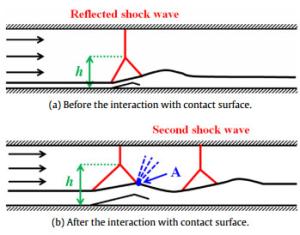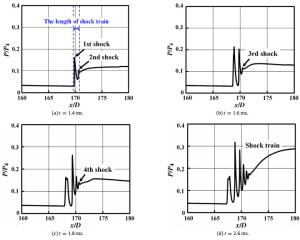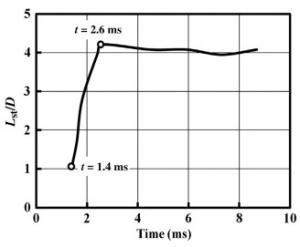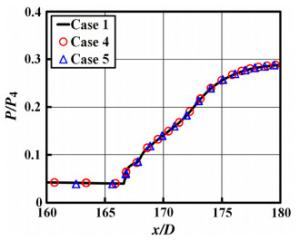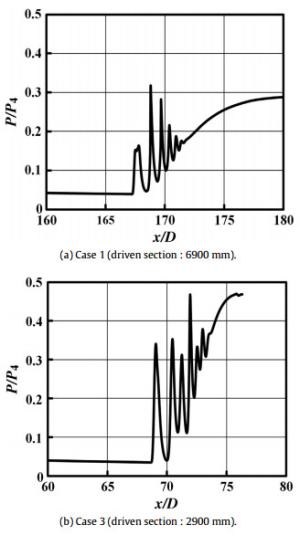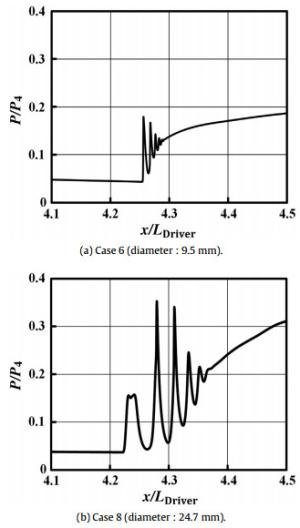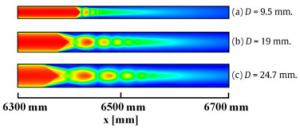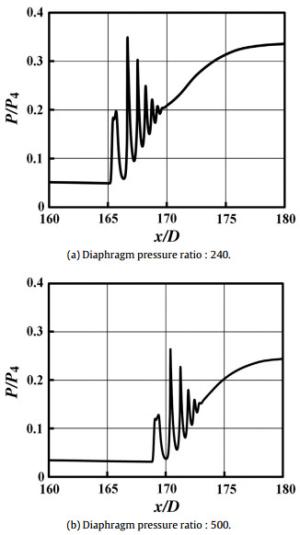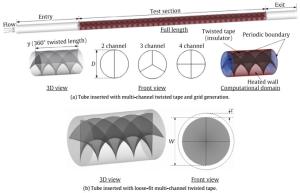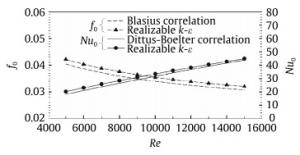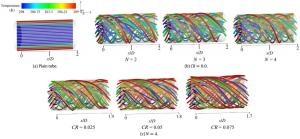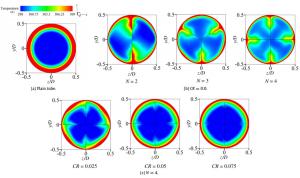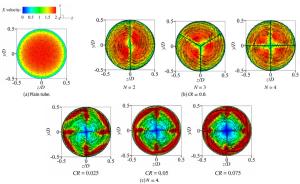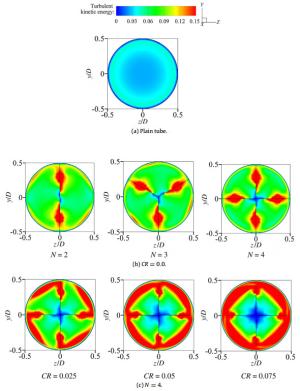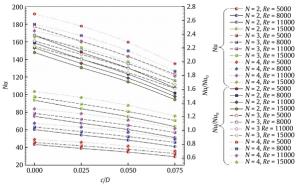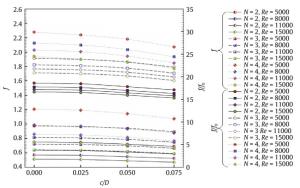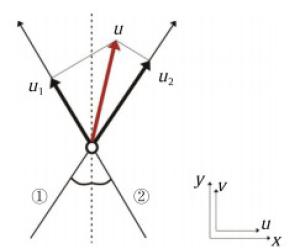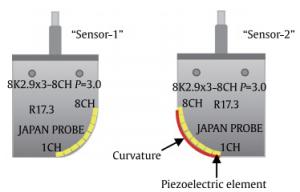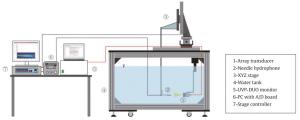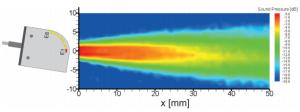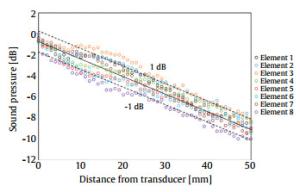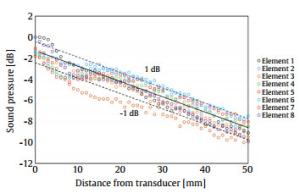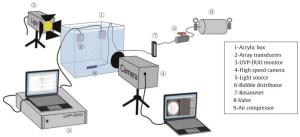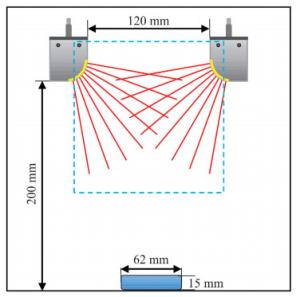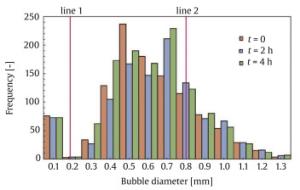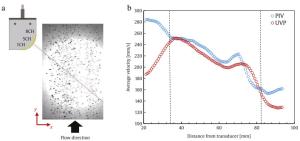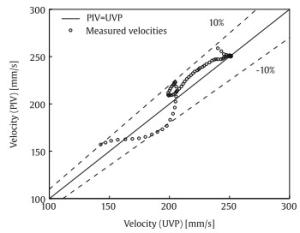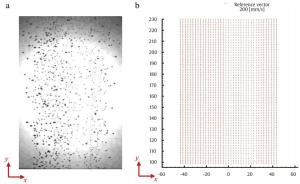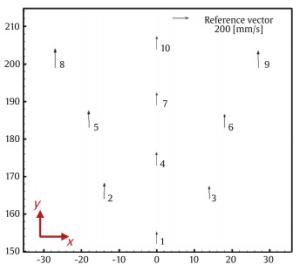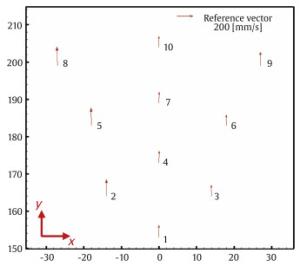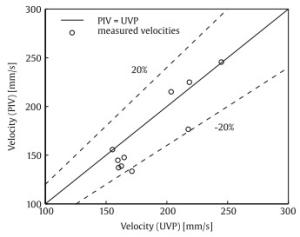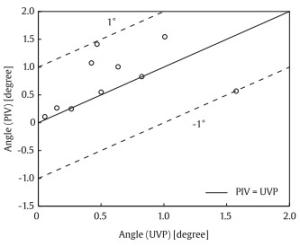Institute of Mechanics,
Chinese Academy of Sciences
2017 Vol.7(6)
Display Mode: |
Theoretical and Applied Mechanics Letters 2017, 7(6): 317-324.
doi: 10.1016/j.taml.2017.09.008
Abstract:
In order to investigate the effect of sample size on the dynamic torsional behaviour of the 2A12 aluminium alloy. In this paper, torsional split Hopkinson bar tests are conducted on this alloy with different sample dimensions. It is found that with the decreasing gauge length and thickness, the tested yield strength increases. However, the sample inner/outer diameter has little effect on the dynamic torsional behaviour. Based on the finite element method, the stress states in the alloy with different sample sizes are analysed. Due to the effect of stress concentration zone (SCZ), the shorter sample has a higher yield stress. Furthermore, the stress distributes more uniformly in the thinner sample, which leads to the higher tested yield stress. According to the experimental and simulation analysis, some suggestions on choosing the sample size are given as well.
In order to investigate the effect of sample size on the dynamic torsional behaviour of the 2A12 aluminium alloy. In this paper, torsional split Hopkinson bar tests are conducted on this alloy with different sample dimensions. It is found that with the decreasing gauge length and thickness, the tested yield strength increases. However, the sample inner/outer diameter has little effect on the dynamic torsional behaviour. Based on the finite element method, the stress states in the alloy with different sample sizes are analysed. Due to the effect of stress concentration zone (SCZ), the shorter sample has a higher yield stress. Furthermore, the stress distributes more uniformly in the thinner sample, which leads to the higher tested yield stress. According to the experimental and simulation analysis, some suggestions on choosing the sample size are given as well.
Theoretical and Applied Mechanics Letters 2017, 7(6): 325-330.
doi: 10.1016/j.taml.2017.11.006
Abstract:
At supercritical conditions a porous strip (or slot strip) placed beneath a shock wave can reduce the drag by a weaker lambda shock system, and increase the buffet boundary, even may increase the lift. Passive shock wave/boundary layer control (PSBC) for drag reduction was conducted by SC(2)-0714 supercritical wing, with emphases on parameter of porous/slot and bump, such as porous distribution, hole diameter, cavity depth, porous direction and so on. A sequential quadratic programming (SQP) optimization method coupled with adjoint method was adopted to achieve the optimized shape and position of the bumps. Computational fluid dynamics (CFD), force test and oil test with half model all indicate that PSBC with porous, slot and bump generally reduce the drag by weaker lambda shock at supercritical conditions. According to wind tunnel test results for angle of attack of 2° at Mach number M=0.8, the porous configuration with 6.21% porosity results in a drag reduction of 0.0002 and lift-drag ratio increase of 0.2, the small bump configuration results in a drag reduction of 0.0007 and lift-drag ratio increase of 0.3. Bump normally reduce drag at design point with shock wave position being accurately computed. If bump diverges from the position of shock wave, drag will not be easily reduced.
At supercritical conditions a porous strip (or slot strip) placed beneath a shock wave can reduce the drag by a weaker lambda shock system, and increase the buffet boundary, even may increase the lift. Passive shock wave/boundary layer control (PSBC) for drag reduction was conducted by SC(2)-0714 supercritical wing, with emphases on parameter of porous/slot and bump, such as porous distribution, hole diameter, cavity depth, porous direction and so on. A sequential quadratic programming (SQP) optimization method coupled with adjoint method was adopted to achieve the optimized shape and position of the bumps. Computational fluid dynamics (CFD), force test and oil test with half model all indicate that PSBC with porous, slot and bump generally reduce the drag by weaker lambda shock at supercritical conditions. According to wind tunnel test results for angle of attack of 2° at Mach number M=0.8, the porous configuration with 6.21% porosity results in a drag reduction of 0.0002 and lift-drag ratio increase of 0.2, the small bump configuration results in a drag reduction of 0.0007 and lift-drag ratio increase of 0.3. Bump normally reduce drag at design point with shock wave position being accurately computed. If bump diverges from the position of shock wave, drag will not be easily reduced.
Theoretical and Applied Mechanics Letters 2017, 7(6): 331-338.
doi: 10.1016/j.taml.2017.11.005
Abstract:
Particle-gas two-phase flows show significantly different behaviors compared to single gas flow through a convergent-divergent nozzle. Non-equilibrium effects, thermal and velocity lag results to the inefficiency of nozzle performance. In the present studies, theoretical analysis and numerical simulations were carried out to investigate particle-gas flows in a C-D nozzle. Homogeneous equilibrium model that no lag in velocity and temperature occurs between particles and gas phase was used to derive mass flow rate and sound speed of multiphase flows. Two-phase flows are regarded as isentropic flows that isentropic relations can be used for homogeneous equilibrium model. Discrete phase model (DPM) where interaction with continuous phase and discrete random walk model were considered was used to calculate particle-gas flows. Particle mass loadings were varied to investigate their effects on choking phenomena of particle-gas flows. Mass flow rate and sound speed of mixture flows were theoretically calculated by homogeneous equilibrium model and compared with numerical results. Shock wave structure and particle number density were also obtained to be different at different particle mass loading and operating pressure conditions.
Particle-gas two-phase flows show significantly different behaviors compared to single gas flow through a convergent-divergent nozzle. Non-equilibrium effects, thermal and velocity lag results to the inefficiency of nozzle performance. In the present studies, theoretical analysis and numerical simulations were carried out to investigate particle-gas flows in a C-D nozzle. Homogeneous equilibrium model that no lag in velocity and temperature occurs between particles and gas phase was used to derive mass flow rate and sound speed of multiphase flows. Two-phase flows are regarded as isentropic flows that isentropic relations can be used for homogeneous equilibrium model. Discrete phase model (DPM) where interaction with continuous phase and discrete random walk model were considered was used to calculate particle-gas flows. Particle mass loadings were varied to investigate their effects on choking phenomena of particle-gas flows. Mass flow rate and sound speed of mixture flows were theoretically calculated by homogeneous equilibrium model and compared with numerical results. Shock wave structure and particle number density were also obtained to be different at different particle mass loading and operating pressure conditions.
Theoretical and Applied Mechanics Letters 2017, 7(6): 339-343.
doi: 10.1016/j.taml.2017.11.007
Abstract:
A high performance flexible porous medium burner that can burn gaseous and liquid fuel with different type of flames (premixed and non-premixed) is proposed. The merit of the combustion within porous medium is that heat is recirculated from the combustion gas to porous medium at upstream wherein vaporization is taken place (in case of liquid fuel) or preheated (in case of gaseous fuel) before mixing with the combustion air followed by combustion within another porous medium at downstream. In a former version of the high performance flexible porous medium burner, the upstream porous medium is incorporated with a cooling system using the combustion air as a coolants to prevent thermal decomposition of fuels and thus the burner clogging caused by carbon deposit within the porous medium can be avoided. However, the cooling effect cannot be properly controlled such that the boiling point of the liquid fuel is maintained at suitable value irrespective of the volume flow rate of the combustion air, which is linearly varied with the firing rate of the burner. In particular at the lean burn condition, where high air flow rate is required with high cooling effect with porous medium. This can result in the porous medium temperature lower than the corresponding boiling point of the liquid fuel and thus evaporation of the fuel is failed and the combustion is ceased. Therefore, method of controlling the cooling air flow rate in the porous medium is proposed and studied in order to appropriately control the porous medium temperature and maintain it at above the boiling point irrespective of the combustion conditions. In this research, experimental and computation analysis are used to design the flexible porous burner (FPMB), with adjustable cooling effect. The result shows that, the new design of FPMB which has temperature in the upstream porous medium is higher than boiling point and lower than thermal decomposition temperature of fuel (kerosene) at all conditions and can be operated at a wide range of equivalence ratio without fuel decomposition and fuel non-vaporization problem.
A high performance flexible porous medium burner that can burn gaseous and liquid fuel with different type of flames (premixed and non-premixed) is proposed. The merit of the combustion within porous medium is that heat is recirculated from the combustion gas to porous medium at upstream wherein vaporization is taken place (in case of liquid fuel) or preheated (in case of gaseous fuel) before mixing with the combustion air followed by combustion within another porous medium at downstream. In a former version of the high performance flexible porous medium burner, the upstream porous medium is incorporated with a cooling system using the combustion air as a coolants to prevent thermal decomposition of fuels and thus the burner clogging caused by carbon deposit within the porous medium can be avoided. However, the cooling effect cannot be properly controlled such that the boiling point of the liquid fuel is maintained at suitable value irrespective of the volume flow rate of the combustion air, which is linearly varied with the firing rate of the burner. In particular at the lean burn condition, where high air flow rate is required with high cooling effect with porous medium. This can result in the porous medium temperature lower than the corresponding boiling point of the liquid fuel and thus evaporation of the fuel is failed and the combustion is ceased. Therefore, method of controlling the cooling air flow rate in the porous medium is proposed and studied in order to appropriately control the porous medium temperature and maintain it at above the boiling point irrespective of the combustion conditions. In this research, experimental and computation analysis are used to design the flexible porous burner (FPMB), with adjustable cooling effect. The result shows that, the new design of FPMB which has temperature in the upstream porous medium is higher than boiling point and lower than thermal decomposition temperature of fuel (kerosene) at all conditions and can be operated at a wide range of equivalence ratio without fuel decomposition and fuel non-vaporization problem.
Theoretical and Applied Mechanics Letters 2017, 7(6): 344-350.
doi: 10.1016/j.taml.2017.09.013
Abstract:
The main objective of this research is to study the effect of rib arrangement on the distributions of the local heat transfer coefficient in a stationary channel. In this study, the ribs with square cross section were used to place on two side walls for study. The rib height-to-hydraulic diameter ratio (e/Dh) and the rib pitchto-height (p/e) ratio were fixed at 0.133 and 10, respectively. Three different types of rib arrangement for inclined ribs, V-shaped ribs and inverted V-shaped ribs were investigated. The rib angle of attack (α) was varied from 30° to 90° for inclined ribs and 45° and 60° for both V-shaped and inverted V-shaped ribs, and compared at constant Reynolds number Re=30000. Thermal Liquid Crystal sheet was applied for evaluating the heat transfer distributions. The results showed that the average Nusselt number on surface with rib inclined angle at 60°, 45°, and 60° V-shaped ribs was improved up to about 20%, 25% and 30% higher than case of angle 90° and the rib inclined angle at 60° V-shaped ribs provided the highest Nusselt number covering largest area when compared to the other cases.
The main objective of this research is to study the effect of rib arrangement on the distributions of the local heat transfer coefficient in a stationary channel. In this study, the ribs with square cross section were used to place on two side walls for study. The rib height-to-hydraulic diameter ratio (e/Dh) and the rib pitchto-height (p/e) ratio were fixed at 0.133 and 10, respectively. Three different types of rib arrangement for inclined ribs, V-shaped ribs and inverted V-shaped ribs were investigated. The rib angle of attack (α) was varied from 30° to 90° for inclined ribs and 45° and 60° for both V-shaped and inverted V-shaped ribs, and compared at constant Reynolds number Re=30000. Thermal Liquid Crystal sheet was applied for evaluating the heat transfer distributions. The results showed that the average Nusselt number on surface with rib inclined angle at 60°, 45°, and 60° V-shaped ribs was improved up to about 20%, 25% and 30% higher than case of angle 90° and the rib inclined angle at 60° V-shaped ribs provided the highest Nusselt number covering largest area when compared to the other cases.
Theoretical and Applied Mechanics Letters 2017, 7(6): 351-356.
doi: 10.1016/j.taml.2017.11.009
Abstract:
The asymmetric vortices over blunt-nose slender body at high angles of attack result in random side force. In this paper, a nose micro-blowing technology is used to control the asymmetric flow. Pressure measurement and particle image velocimetry (PIV) experiments are conducted in a low-speed wind tunnel to research effects of jet flow rate on asymmetric vortices over blunt-nose slender body. The angle of attack of the model is fixed at 50° and the Reynolds number for the experiments is 1.6×105 based on diameter of aftbody. A blow hole (5 mm in diameter) on the nose is processed at circumferential angle θb=90° and meridian angle γb=20° with jet momentum ratio Cμ ranging from 5.30×10-7 to 1.19×10-4. Tests are made under two kinds of perturbations. One is called single perturbation with only blow hole and the other is called combined perturbation consists of blow hole and additional granules set on nose. The results show that whether the model has the single perturbation or the combined one, the sectional side force of x/D=3 varies in the same direction with the increasement of Cμ and remains stable when Cμ is greater than 3.29×10-6. But the stable force values are different according to various perturbations. The fact proves that the size and direction of the side force of blunt-nose slender body can be controlled by the nose micro-blowing.
The asymmetric vortices over blunt-nose slender body at high angles of attack result in random side force. In this paper, a nose micro-blowing technology is used to control the asymmetric flow. Pressure measurement and particle image velocimetry (PIV) experiments are conducted in a low-speed wind tunnel to research effects of jet flow rate on asymmetric vortices over blunt-nose slender body. The angle of attack of the model is fixed at 50° and the Reynolds number for the experiments is 1.6×105 based on diameter of aftbody. A blow hole (5 mm in diameter) on the nose is processed at circumferential angle θb=90° and meridian angle γb=20° with jet momentum ratio Cμ ranging from 5.30×10-7 to 1.19×10-4. Tests are made under two kinds of perturbations. One is called single perturbation with only blow hole and the other is called combined perturbation consists of blow hole and additional granules set on nose. The results show that whether the model has the single perturbation or the combined one, the sectional side force of x/D=3 varies in the same direction with the increasement of Cμ and remains stable when Cμ is greater than 3.29×10-6. But the stable force values are different according to various perturbations. The fact proves that the size and direction of the side force of blunt-nose slender body can be controlled by the nose micro-blowing.
Theoretical and Applied Mechanics Letters 2017, 7(6): 357-361.
doi: 10.1016/j.taml.2017.11.010
Abstract:
Recently, various studies of micro air vehicle (MAV) and unmanned air vehicle (UAV) have been reported from wide range points of view. The aim of this study is to research the aerodynamic improvement of delta wing in low Reynold's number region to develop an applicative these air vehicle. As an attractive tool in delta wing, leading edge flap (LEF) is employed to directly modify the strength and structure of vortices originating from the separation point along the leading edge. Various configurations of LEF such as drooping apex flap and upward deflected flap are used in combination to enhance the aerodynamic characteristics in the delta wing. The fluid force measurement by six component load cell and particle image velocimetry (PIV) analysis are performed as the experimental method. The relations between the aerodynamic superiority and the vortex behavior around the models are demonstrated.
Recently, various studies of micro air vehicle (MAV) and unmanned air vehicle (UAV) have been reported from wide range points of view. The aim of this study is to research the aerodynamic improvement of delta wing in low Reynold's number region to develop an applicative these air vehicle. As an attractive tool in delta wing, leading edge flap (LEF) is employed to directly modify the strength and structure of vortices originating from the separation point along the leading edge. Various configurations of LEF such as drooping apex flap and upward deflected flap are used in combination to enhance the aerodynamic characteristics in the delta wing. The fluid force measurement by six component load cell and particle image velocimetry (PIV) analysis are performed as the experimental method. The relations between the aerodynamic superiority and the vortex behavior around the models are demonstrated.
Theoretical and Applied Mechanics Letters 2017, 7(6): 362-365.
doi: 10.1016/j.taml.2017.11.008
Abstract:
The paper focuses on the triple jets interaction with a hypersonic external flow on a revolution body. The experimental model is a ogive-cylinder body with three supersonic nozzles, which are aligned along the flow direction. The freestream Mach numbers are 5 and 6. The spatial and surface flow characteristics are illustrated by the schlieren photographs and the typical pressure distribution. The results show that there are multi-wave system, separation, reattachment, multi-peak pressure, high-pressure and low-pressure zone boundaries obvious distinction in tri-jets interference flowfield. The present paper also analyzes how do the pressure ratio, the angle of attack, and Mach number effect on tri-jets interaction characteristics.
The paper focuses on the triple jets interaction with a hypersonic external flow on a revolution body. The experimental model is a ogive-cylinder body with three supersonic nozzles, which are aligned along the flow direction. The freestream Mach numbers are 5 and 6. The spatial and surface flow characteristics are illustrated by the schlieren photographs and the typical pressure distribution. The results show that there are multi-wave system, separation, reattachment, multi-peak pressure, high-pressure and low-pressure zone boundaries obvious distinction in tri-jets interference flowfield. The present paper also analyzes how do the pressure ratio, the angle of attack, and Mach number effect on tri-jets interaction characteristics.
Theoretical and Applied Mechanics Letters 2017, 7(6): 366-371.
doi: 10.1016/j.taml.2017.09.005
Abstract:
Shock tubes are devices which are used in the investigation of high speed and high temperature flow of compressible gas. Inside a shock tube, the interaction between the reflected shock wave and boundary layer leads to a complex flow phenomenon. Initially a normal shock wave is formed in the shock tube which migrates toward the closed end of the tube and that in turn leads to the reflection of shock. Due to the boundary layer interaction with the reflected shock, the bifurcation of shock wave takes place. The bifurcated shock wave then approaches the contact surface and shock train is generated. Till date only a few studies have been conducted to investigate this shock train phenomenon inside the shock tube. For the present study a computational fluid dynamics (CFD) analysis has been performed on a two dimensional axi-symmetric model of a shock tube using unsteady, compressible Navier-Stokes equations. In order to investigate the detailed characteristics of shock train, parametric studies have been performed by varying different parameters such as the shock tube length, diameter, pressure ratio used inside the shock tube.
Shock tubes are devices which are used in the investigation of high speed and high temperature flow of compressible gas. Inside a shock tube, the interaction between the reflected shock wave and boundary layer leads to a complex flow phenomenon. Initially a normal shock wave is formed in the shock tube which migrates toward the closed end of the tube and that in turn leads to the reflection of shock. Due to the boundary layer interaction with the reflected shock, the bifurcation of shock wave takes place. The bifurcated shock wave then approaches the contact surface and shock train is generated. Till date only a few studies have been conducted to investigate this shock train phenomenon inside the shock tube. For the present study a computational fluid dynamics (CFD) analysis has been performed on a two dimensional axi-symmetric model of a shock tube using unsteady, compressible Navier-Stokes equations. In order to investigate the detailed characteristics of shock train, parametric studies have been performed by varying different parameters such as the shock tube length, diameter, pressure ratio used inside the shock tube.
Theoretical and Applied Mechanics Letters 2017, 7(6): 372-378.
doi: 10.1016/j.taml.2017.11.011
Abstract:
Heat transfer and flow behaviors in three-dimensional circular tubes with loose-fit multiple channel twisted tapes were numerically studied. The investigation was examined for Reynolds numbers (Re) ranging from 5000 to 15, 000, by using air as testing fluid. Effects of the multiple channel number (N=2, 3, and 4), clearance ratio (CR=0.0, 0.025, 0.05, and 0.075) on heat transfer enhancement and flow friction were examined. The numerical results indicate that the tubes with loose-fit multiple channel twisted tapes perform higher heat transfer rates than the plain tube. The enhanced heat transfer rate is escorted with larger pressure drop. Both heat transfer and pressure drop increase with increasing multiple channel number (N) and decreasing clearance ratio (CR). Heat transfer augmented by the loose-fit multiple channel twisted tape with N=4 is higher than those enhanced by the ones with N=2 and 3 by around 9.5-17.8% and 5.8-7.8%, respectively. In addition, the loose-fit multiple channel twisted tapes with clearance ratio of 0.025, 0.05, and 0.075 give lower heat transfer rates than the one with CR=0.0 by around 8.4%, 17.5%, and 28.8%, respectively.
Heat transfer and flow behaviors in three-dimensional circular tubes with loose-fit multiple channel twisted tapes were numerically studied. The investigation was examined for Reynolds numbers (Re) ranging from 5000 to 15, 000, by using air as testing fluid. Effects of the multiple channel number (N=2, 3, and 4), clearance ratio (CR=0.0, 0.025, 0.05, and 0.075) on heat transfer enhancement and flow friction were examined. The numerical results indicate that the tubes with loose-fit multiple channel twisted tapes perform higher heat transfer rates than the plain tube. The enhanced heat transfer rate is escorted with larger pressure drop. Both heat transfer and pressure drop increase with increasing multiple channel number (N) and decreasing clearance ratio (CR). Heat transfer augmented by the loose-fit multiple channel twisted tape with N=4 is higher than those enhanced by the ones with N=2 and 3 by around 9.5-17.8% and 5.8-7.8%, respectively. In addition, the loose-fit multiple channel twisted tapes with clearance ratio of 0.025, 0.05, and 0.075 give lower heat transfer rates than the one with CR=0.0 by around 8.4%, 17.5%, and 28.8%, respectively.
Theoretical and Applied Mechanics Letters 2017, 7(6): 379-385.
doi: 10.1016/j.taml.2017.09.014
Abstract:
In the present work, an experimental study of bubbly two-phase flow in a rectangular bubble column was performed using two ultrasonic array sensors, which can measure the instantaneous velocity of gas bubbles on multiple measurement lines. After the sound pressure distribution of sensors had been evaluated with a needle hydrophone technique, the array sensors were applied to two-phase bubble column. To assess the accuracy of the measurement system with array sensors for one and two-dimensional velocity, a simultaneous measurement was performed with an optical measurement technique called particle image velocimetry (PIV). Experimental results showed that accuracy of the measurement system with array sensors is under 10% for one-dimensional velocity profile measurement compared with PIV technique. The accuracy of the system was estimated to be under 20% along the mean flow direction in the case of two-dimensional vector mapping.
In the present work, an experimental study of bubbly two-phase flow in a rectangular bubble column was performed using two ultrasonic array sensors, which can measure the instantaneous velocity of gas bubbles on multiple measurement lines. After the sound pressure distribution of sensors had been evaluated with a needle hydrophone technique, the array sensors were applied to two-phase bubble column. To assess the accuracy of the measurement system with array sensors for one and two-dimensional velocity, a simultaneous measurement was performed with an optical measurement technique called particle image velocimetry (PIV). Experimental results showed that accuracy of the measurement system with array sensors is under 10% for one-dimensional velocity profile measurement compared with PIV technique. The accuracy of the system was estimated to be under 20% along the mean flow direction in the case of two-dimensional vector mapping.
 Submit a Paper
Submit a Paper
 Subscription
Subscription
News
MORE+
Call for Papers
MORE+
- Crossing-Mechanics Driven by Big Data
- Machine learning in the fluid mechanics research of wind energy
- Mechanics of Origami/Kirigami structures and metamaterials
- New insights and perspectives on impact biomechanics for human tissues: from injury prevention, protection to protective equipment
- Environmental Mechanics for Extreme Natural Events



